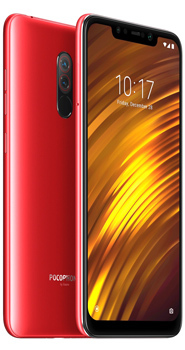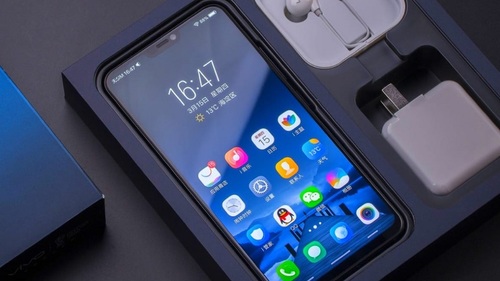Xiaomi, together with OnePlus, has carved out a nice little niche for itself as flagship killers. With each release, their phones have continued to carry the defining features of a flagship smartphone. Flagship cornerstones like the latest and greatest chipset, top-notch camera system, and superb build quality are all present. Their best feature, however, is that all of these premium qualities are sold at an aggressive price point. The OnePlus 6, for example, is equipped with Qualcomm’s Snapdragon 845 and an OIS-enabled dual camera set up. It’s also encased in gorilla glass 5 on both its front and back panels and protected all around by an aluminum frame. What’s truly amazing is that all of that costs just around $529 in a world where similarly equipped phones cost around $1,000.
Enter, Pocophone. It’s xXiaomi’s recently launched sub-brand that had just released their first ever phone called the F1. Within a month of its release, it has become one of the hottest handsets out in the market with a lineup that includes the latest iPhones.
Like Xiaomi and OnePlus once did, the Pocophone is carving a niche of its own – the budget flagship. Unlike the two more established brands, however, Pocophone prioritizes performance over anything else. This allows them to take some shortcuts on some aspects of the phone hoping that consumers don’t notice. This allows the young company to introduce their product at just $300 even if it has largely the same internals as the $1,000-flagships.
Specs
Specs-wise is where the Pocophone truly shines. It’s got extremely competitive internals that allows it to compete with expensive flagships. It even outperforms other significantly more expensive smartphones currently out on the market.
There are, of course, some compromises that have to be made. The camera, for example, is a decent performer but it comes nowhere near the performance of the true flagships.
Flagship-Level Chipset
Snapdragon 845 is the current king of the hill when it comes to processors. It’s what the $1,000 Galaxy Note 9 has under its hood. It’s such a powerful chipset that it can even power some of the latest “Always On” ultraportable laptops.
The Pocophone F1 having this chipset seems like an impossible feat considering the heavyweights that it shares the same feature. But, it does, and this is what makes the phone extremely important and popular to consumers.
What’s even more amazing is that the chipset comes with what the company calls Liquid Cool technology that even flagships don’t have. This allows the phone to keep cool even under heavy loads.
Decent Cameras
The camera department is perhaps one of the points of compromise for the Pocophone. Although it ships with a dual camera setup, the image quality on that the phone produces are nowhere near flagship level devices such as top performers like the Pixel 2, iPhone X, and the Galaxy Note 9. However, they’re still highly capable shooters that rivals more expensive smartphones such as the flagship killers OnePlus and Xiaomi.
In fact, the Pocophone F1 uses exactly the same cameras as the Mi 8, Xiaomi’s current top-of-the-line offering. As such, it’s still highly capable in optimal lighting scenarios. It only crumbles when it comes low-light scenes especially when compared to the true flagships.
RAM
When it comes to performance, other than the chipset, there’s no other factor more important than the amount of Random Access Memory. It’s what allows for quick app switching that is becoming more and more important to users as attention spans become smaller over the years.
The current midrange phone standard is 3GB – 4GB but, the entry-level flagship killer is at 6GB. The Pocophone matches flagship killers in this aspect too with a starting RAM of 6GB and maxing out at 8GB for the more expensive variant.
Build
Standard flagships, be it due to fashion or necessity, are currently sandwiched between two Gorilla Glass panels on both front and back faces. This allows for better signal reception, implementation of wireless charging, and premium feel in the hand. Flagship killers, on the other hand, have adopted yesterday’s metal build.
The Pocophone, sadly, does not employ any of these and opted to use polycarbonate as housing for their maiden voyage in the smartphone business. On paper, this might seem like the ultimate deal breaker as the plastic in smartphones are now considered unabashedly a budget phone’s material of choice. However, the implementation of the polycarbonate build in the Pocophone F1 does not make it feel like a cheap phone at all.
To a degree, it even makes the phone a little bit more durable than both the Gorilla Glass and the metal. Plastic allows for some malleability which makes drops a little bit more tolerable than with the other materials.
Software
While software has always been and always will be a matter of personal preference, the software on the Pocophone F1 is still something that would surely get Android fans excited. It’s close to stock, which means it’s lightweight, fast, and efficient.
The Pocophone uses its parent company’s MIUI. The added functionalities from Xiaomi’s MIUI are also nice to have on-hand. Sharing Wi-Fi password through QR code, for example is something that non-MIUI users has always envied.
Budget Flagship
While the flagship battle between the iPhone, the Galaxy Note Series, and other $1,000 smartphone manufacturers are definitely exciting, the midrange segment still has a much more relevant game of one-upmanship going on.
The introduction of the Pocophone definitely shakes things up in this segment. Currently, Xiaomi and OnePlus are the next options for people who either can’t afford or don’t need flagship smartphones. But now, consumers have a choice to go even cheaper and still have flagship-level performance.
Pocophone’s first foray into the smartphone business is definitely a valiant effort to upset the established leaders. It’s an excellent primarily phone. However, in a world where handsets are supposed to function as primary phones, primary cameras, and primary productivity driver, the Pocophone is a little lacking. In these areas, the Pocophone is definitely secondary.
Enter, Pocophone. It’s xXiaomi’s recently launched sub-brand that had just released their first ever phone called the F1. Within a month of its release, it has become one of the hottest handsets out in the market with a lineup that includes the latest iPhones.
Like Xiaomi and OnePlus once did, the Pocophone is carving a niche of its own – the budget flagship. Unlike the two more established brands, however, Pocophone prioritizes performance over anything else. This allows them to take some shortcuts on some aspects of the phone hoping that consumers don’t notice. This allows the young company to introduce their product at just $300 even if it has largely the same internals as the $1,000-flagships.
Specs
Specs-wise is where the Pocophone truly shines. It’s got extremely competitive internals that allows it to compete with expensive flagships. It even outperforms other significantly more expensive smartphones currently out on the market.
There are, of course, some compromises that have to be made. The camera, for example, is a decent performer but it comes nowhere near the performance of the true flagships.
Flagship-Level Chipset
Snapdragon 845 is the current king of the hill when it comes to processors. It’s what the $1,000 Galaxy Note 9 has under its hood. It’s such a powerful chipset that it can even power some of the latest “Always On” ultraportable laptops.
The Pocophone F1 having this chipset seems like an impossible feat considering the heavyweights that it shares the same feature. But, it does, and this is what makes the phone extremely important and popular to consumers.
What’s even more amazing is that the chipset comes with what the company calls Liquid Cool technology that even flagships don’t have. This allows the phone to keep cool even under heavy loads.
Decent Cameras
The camera department is perhaps one of the points of compromise for the Pocophone. Although it ships with a dual camera setup, the image quality on that the phone produces are nowhere near flagship level devices such as top performers like the Pixel 2, iPhone X, and the Galaxy Note 9. However, they’re still highly capable shooters that rivals more expensive smartphones such as the flagship killers OnePlus and Xiaomi.
In fact, the Pocophone F1 uses exactly the same cameras as the Mi 8, Xiaomi’s current top-of-the-line offering. As such, it’s still highly capable in optimal lighting scenarios. It only crumbles when it comes low-light scenes especially when compared to the true flagships.
RAM
When it comes to performance, other than the chipset, there’s no other factor more important than the amount of Random Access Memory. It’s what allows for quick app switching that is becoming more and more important to users as attention spans become smaller over the years.
The current midrange phone standard is 3GB – 4GB but, the entry-level flagship killer is at 6GB. The Pocophone matches flagship killers in this aspect too with a starting RAM of 6GB and maxing out at 8GB for the more expensive variant.
Build
Standard flagships, be it due to fashion or necessity, are currently sandwiched between two Gorilla Glass panels on both front and back faces. This allows for better signal reception, implementation of wireless charging, and premium feel in the hand. Flagship killers, on the other hand, have adopted yesterday’s metal build.
The Pocophone, sadly, does not employ any of these and opted to use polycarbonate as housing for their maiden voyage in the smartphone business. On paper, this might seem like the ultimate deal breaker as the plastic in smartphones are now considered unabashedly a budget phone’s material of choice. However, the implementation of the polycarbonate build in the Pocophone F1 does not make it feel like a cheap phone at all.
To a degree, it even makes the phone a little bit more durable than both the Gorilla Glass and the metal. Plastic allows for some malleability which makes drops a little bit more tolerable than with the other materials.
Software
While software has always been and always will be a matter of personal preference, the software on the Pocophone F1 is still something that would surely get Android fans excited. It’s close to stock, which means it’s lightweight, fast, and efficient.
The Pocophone uses its parent company’s MIUI. The added functionalities from Xiaomi’s MIUI are also nice to have on-hand. Sharing Wi-Fi password through QR code, for example is something that non-MIUI users has always envied.
Budget Flagship
While the flagship battle between the iPhone, the Galaxy Note Series, and other $1,000 smartphone manufacturers are definitely exciting, the midrange segment still has a much more relevant game of one-upmanship going on.
The introduction of the Pocophone definitely shakes things up in this segment. Currently, Xiaomi and OnePlus are the next options for people who either can’t afford or don’t need flagship smartphones. But now, consumers have a choice to go even cheaper and still have flagship-level performance.
Pocophone’s first foray into the smartphone business is definitely a valiant effort to upset the established leaders. It’s an excellent primarily phone. However, in a world where handsets are supposed to function as primary phones, primary cameras, and primary productivity driver, the Pocophone is a little lacking. In these areas, the Pocophone is definitely secondary.



